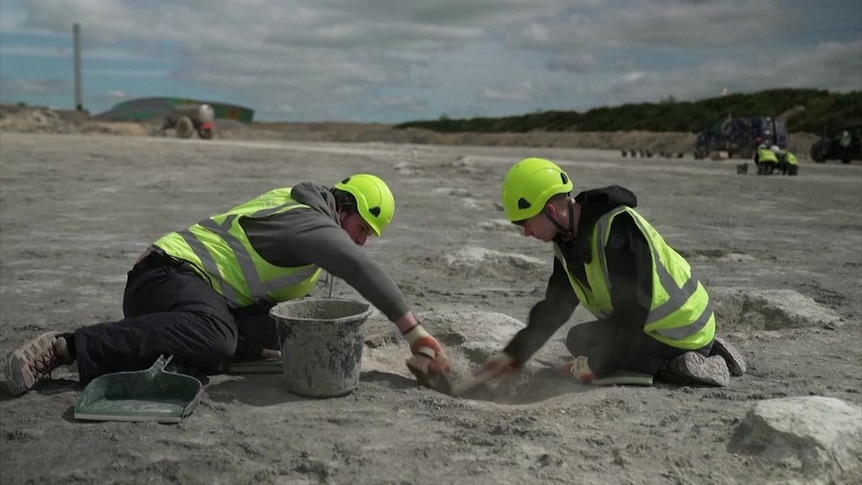Sabra Lane: The world’s longest set of dinosaur footprints has been uncovered in an English quarry. It’s being dubbed a Jurassic superhighway. The giant footprints were made about 166 million years ago by sauropods, those four-legged, long-necked, long-tailed plant-eating beasts that could grow to about 18 metres long. Syan Vallance reports from London.
Syan Vallance: When a team of British scientists found what’s believed to be the longest set of dinosaur footprints ever discovered, it was a groundbreaking discovery in more ways than one. The giant prints were hidden under tonnes of rock for 166 million years. But when the layers of limestone were blown away in a controlled explosion during a summer excavation, it revealed a Jurassic superhighway.
Kirsty Edgar: We’re seeing something and uncovering something that people have never seen before.
Syan Vallance: University of Birmingham paleontologist Kirsty Edgar is part of the excavation team and says the site is helping scientists answer prehistoric questions.
Kirsty Edgar: It’s so rare to find something this big where you can get that picture into this past world.
Syan Vallance: Luckily this team knew where to look. Dinosaur tracks were first discovered at the dig site, a quarry north-west of London, back in the 1990s. But none quite like this. More than 100 giant footsteps stretching across 220 metres. Each footprint’s enormous, around one metre long, most likely made by sauropods, four-legged, long-necked vegetarians which grew as long as 18 metres. Scientists like Dr Duncan Murdoch from Oxford University’s Museum of Natural History have worked here for several years, coordinating with the quarry’s operator.
Duncan Murdock: We’re finding more and more prints every time as they’re exposing more and more of the surface. There’s always surprises.
Syan Vallance: Not just when it comes to dinosaurs.
Duncan Murdock: It’s a fantastically rich place to look for fossils before you get to the dinosaur prints. So there’s lots of marine animal sea creatures, things like sea urchins, squid-like animals, shelled creatures.
Syan Vallance: The scientists say millions of years ago the UK was part of a landmass closer to the equator as tectonic plates shifted and moved north, but in the Jurassic period, England would have been much more hot and humid.
Duncan Murdock: So something like the Florida Keys or the Bahamas Bank where you get very, very shallow sea in these clear tropical waters and then sometimes the mudflats get exposed.
Syan Vallance: The team is confident it’ll uncover more evidence of traffic along this Jurassic highway as they dig deeper into our prehistoric past. This is Syan Vallance in London, reporting for AM.

